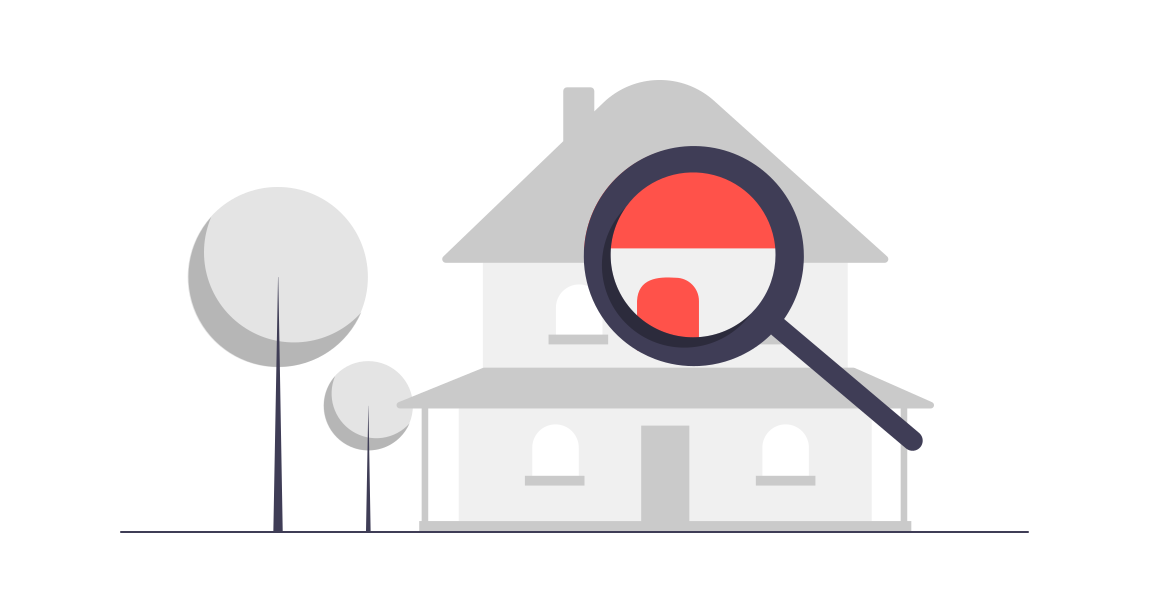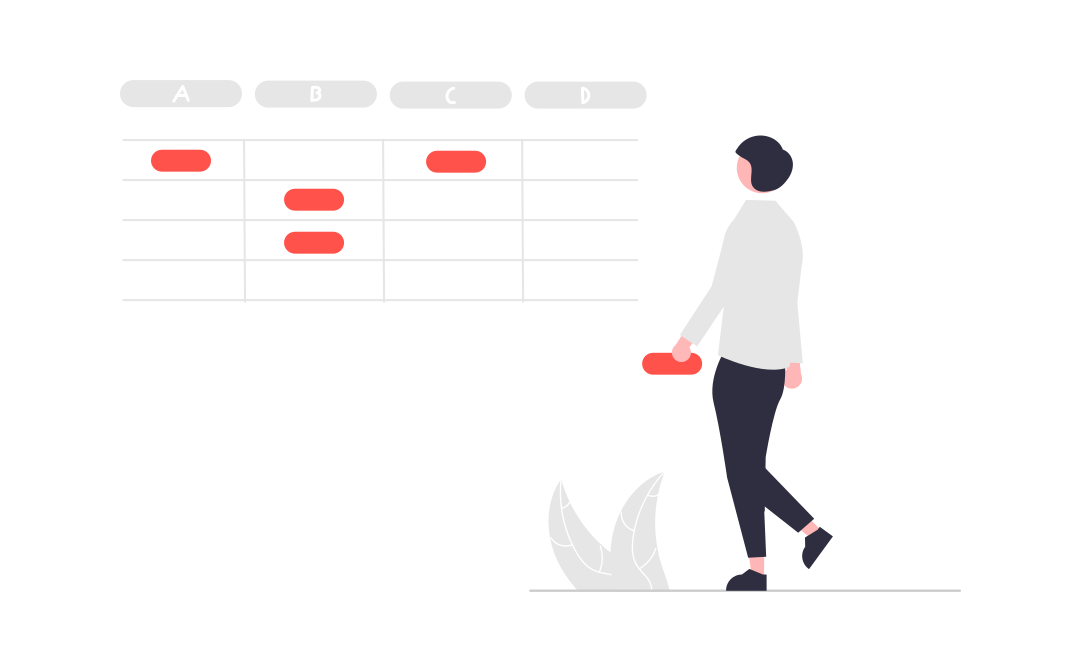This is just one example of how underestimating the importance of certain property documents can lead to big problems. In the following sections, we’ll explore the top 20 property documents you shouldn’t overlook, ensuring your real estate journey is smooth and secure.
Top 20 Property Management Templates
Acquisition & Marketing
1. Property Evaluation Report
Template:
Section | Description |
Property Details |
|
Market Analysis |
|
Property Condition |
|
Financial Analysis |
|
Recommendations |
|
Conclusion |
|

Section | Description |
1. Executive Summary | Briefly introduce your company, its unique selling points, and the overall objectives of your marketing plan. |
2. Situational Analysis | Assess your current market position. This includes analyzing your strengths and weaknesses (SWOT analysis) compared to competitors, along with current market trends and your target audience. |
3. Target Audience |
|
4. Marketing Goals & Objectives |
|
5. Marketing Strategies | Define the specific tactics you’ll use to reach your target audience. This could include online marketing (website, social media, paid advertising), offline marketing (print ads, flyers, signage), or partnerships with realtors or other businesses. |
6. Marketing Budget | Allocate a budget for your marketing activities, taking into account the cost of different channels, tools, and resources. |
7. Action Plan | Create a timeline outlining specific tasks and deadlines for each marketing activity. |
8. Metrics & Measurement | Identify key performance indicators (KPIs) to track the success of your marketing plan. These might include website conversions, lead generation, social media engagement, or client acquisition cost. |
9. Revision & Optimization | Regularly monitor your KPIs and adjust your marketing strategies based on the data. |
3. Lease Advertisement
Here’s a basic template you can use to create your lease advertisement:
Section | Content |
Headline | Attention-grabbing title that captures the essence of the property (e.g., “Charming Studio in Vibrant Downtown” or “Spacious Family Home with Pool”) |
Property Type | Specify the type of property (e.g., apartment, house, condo) |
Location | Mention the neighborhood and any nearby landmarks |
Bedrooms & Bathrooms | Indicate the number of bedrooms and bathrooms |
Key Features | List 3-5 of the property’s most attractive features (e.g., in-unit laundry, balcony, pet-friendly) |
Rent | Clearly state the monthly rent amount |
Availability | Indicate the availability date (e.g., “Available Now” or “Move-In Ready July 1st”) |
Contact Information | Provide contact details for inquiries (e.g., phone number, email address) |
Optional | You can include high-quality photos of the property to further entice potential tenants |
Tenant Management
4. Rental Application

Section | Description |
Applicant Information | Full Name, Contact Information (Phone, Email), Date of Birth |
Rental Property | Address of the property you’re applying for |
Move-In Date | Desired move-in date |
Occupancy | Number of adults and children who will be living in the unit |
Employment | Current employer, job title, income, and length of employment |
Previous Housing | Previous rental addresses, contact information for landlords, and reasons for leaving |
Rental History | History of timely rent payments, any evictions or lease violations |
Financial Information | Bank account information (optional), proof of income (paystubs, tax returns) |
References | Contact information for personal and professional references |
Pets | Number, type, and breed of any pets (if allowed) |
Vehicles | Number and type of vehicles (if parking information is relevant) |
Authorization | Permission to perform credit and background checks (Fair Housing Act compliance required) |
Application Fee | Acknowledgement of application fee (if applicable) |
Signature | Applicant’s signature and date |
5. Lease Agreement
Template:
Lease Agreement | Description |
Parties | Identifies the landlord and tenant(s) by name and contact information. |
Property Description | Details the specific rental unit being leased, including the address, type of property (apartment, house, etc.), and any included amenities (parking, appliances, etc.). |
Term | Specifies the start and end date of the lease term. |
Rent | Defines the monthly rent amount, due date, and acceptable methods of payment. |
Security Deposit | States the amount of the security deposit, any deductions allowed, and the timeframe for returning it to the tenant upon lease termination. |
Use of Premises | Outlines the permitted use of the property and any restrictions (e.g., subletting, pets). |
Tenant Responsibilities | Lists the tenant’s obligations, such as maintaining the property, paying utilities, and following noise regulations. |
Landlord Responsibilities | Details the landlord’s duties, including providing a habitable property, making repairs, and complying with building codes. |
Maintenance and Repairs | Establishes procedures for requesting and completing repairs, outlining who is responsible for various maintenance tasks. |
Utilities | Specifies which utilities are the tenant’s responsibility and which are included in the rent. |
Termination | Describes the process for terminating the lease by either party, including required notice periods and any associated fees. |
Early Termination | Outlines the terms for breaking the lease early, including potential penalties. |
Access | Defines the landlord’s right to access the property for repairs, showings, or emergencies. |
Lead-Based Paint Disclosure | (Applicable if the property was built before 1978) Informs tenants about potential lead hazards and their rights. |
Attorney Fees | (Optional) Specifies who is responsible for legal fees incurred during lease disputes. |
Signatures | Includes designated lines for both the landlord and tenant(s) to sign and date the agreement. |
6. Move-In Inspection Report

Category | Description | Notes |
Property Information |
| Fill in the relevant details. |
Inspection Participants |
| Include signatures of all present for the inspection. |
General Condition |
|
|
Flooring | Carpet (stains, rips, excessive wear) Hardwood/Tile (scratches, cracks) | |
Walls | Holes, dents, marks, scuffs | |
Ceilings | Water damage, stains, cracks | |
Kitchen |
| |
Bathroom(s) |
| |
Other (Optional) |
| Include any additional property-specific features. |
Photos | Attach dated photos of any existing damage throughout the property. | Use clear, high-resolution images. |
Signatures |
| Date the report after completion of the inspection. |
7. Move-Out Inspection Report
Template:
Section | Description |
Property Information |
|
General Condition |
|
Room-by-Room Inspection |
|
Exterior Inspection | Landscaping (damage, overgrown) Driveway and walkways (cracks, stains) * Garbage disposal areas (cleanliness) |
Keys and Other Items | Number of keys returned Missing items (if any) |
Photographic Evidence | Include a section to list and describe any photographs taken during the inspection to document damages |
Signatures | Signature lines for both the inspector and tenant (with date) acknowledging their review of the report |
8. Maintenance Request Form
Template:
Field | Description |
Tenant Information |
|
Request Details |
|
Additional Information |
|
Authorization | Checkbox for tenant to acknowledge access permission for repairs during reasonable hours |
Submission | Submit button or instruction |
9. Rent Payment Receipt

Field | Description |
Property Management Company | Name of your property management company (if applicable) |
Landlord Name | Name of the property owner |
Tenant Name | Name of the tenant who made the payment |
Property Address | Address of the rental property |
Payment Date | Date the rent payment was received |
Payment Method | Cash, check, online payment, etc. |
Reference Number | Unique identifier for the payment (if applicable) |
Rent Amount | Monthly rent amount due |
Late Fee (if applicable) | Amount of any late fees charged |
Total Amount Received | Total amount paid by the tenant (including rent and late fees) |
10. Late Rent Notice
Template:
Item | Information |
Property Information | Include the property address and unit number. |
Tenant Information | Include the tenant’s full name(s). |
Date | Insert the date the notice is issued. |
Rent Due Date | Indicate the original due date for the rent payment. |
Overdue Amount | Specify the total amount of rent that is past due. |
Late Fee (if applicable) | If a late fee is included in the lease agreement, mention the amount here. |
Total Amount Due | Clearly state the sum of overdue rent and any late fees. |
New Due Date | Provide a clear deadline for the tenant to pay the outstanding balance. |
Late Payment Consequences | Briefly outline the potential consequences of late payment, which could include additional late fees, eviction proceedings, or legal action. |
Contact Information | Include contact details for the property manager or landlord for any questions or to discuss payment options. |
Financial Management
11. Monthly Rent Collection Report

Property Name: [Property Name]
Month: [Month and Year]
Prepared By: [Preparer’s Name]
Date: [Date of Preparation]
1. Summary
Total Rent Due: [Total Amount Due for the Month]
Total Rent Collected: [Total Amount Collected]
Total Rent Outstanding: [Total Amount Outstanding]
2. Rent Collection Details
Tenant Name | Unit Number | Rent Due | Rent Collected | Date Collected | Outstanding Balance |
[Tenant Name] | [Unit #] | [Amount] | [Amount] | [Date] | [Amount] |
[Tenant Name] | [Unit #] | [Amount] | [Amount] | [Date] | [Amount] |
[Tenant Name] | [Unit #] | [Amount] | [Amount] | [Date] | [Amount] |
… | … | … | … | … | … |
3. Delinquency Report
Tenant Name | Unit Number | Rent Due | Days Overdue | Action Taken |
[Tenant Name] | [Unit #] | [Amount] | [Days] | [Notice Sent/Called] |
[Tenant Name] | [Unit #] | [Amount] | [Days] | [Notice Sent/Called] |
… | … | … | … | … |
4. Comments/Notes
Tenant [Name]: [Any additional comments or notes about the tenant’s payment status]
Tenant [Name]: [Any additional comments or notes about the tenant’s payment status]
5. Prepared By
[Preparer’s Signature]
[Preparer’s Name]
[Preparer’s Title]
12. Monthly Operating Expense Report
MONTHLY OPERATING EXPENSE REPORT
Property Name: [Property Name]
Report Month: [Month, Year]
Prepared By: [Preparer’s Name]
Date Prepared: [Date]
1. Summary
Category | Budgeted Amount | Actual Amount | Variance | Notes |
Maintenance | [Budgeted Amount] | [Actual Amount] | [Variance] | [Notes] |
Utilities | [Budgeted Amount] | [Actual Amount] | [Variance] | [Notes] |
Management Fees | [Budgeted Amount] | [Actual Amount] | [Variance] | [Notes] |
Landscaping | [Budgeted Amount] | [Actual Amount] | [Variance] | [Notes] |
Security | [Budgeted Amount] | [Actual Amount] | [Variance] | [Notes] |
Insurance | [Budgeted Amount] | [Actual Amount] | [Variance] | [Notes] |
Taxes | [Budgeted Amount] | [Actual Amount] | [Variance] | [Notes] |
Administrative Costs | [Budgeted Amount] | [Actual Amount] | [Variance] | [Notes] |
Other Expenses | [Budgeted Amount] | [Actual Amount] | [Variance] | [Notes] |
Total Operating Expenses | [Total Budgeted] | [Total Actual] | [Total Variance] | [Notes] |
2. Detailed Expense Breakdown
Expense Item | Description | Amount | Date | Notes |
[Expense Item] | [Description] | [Amount] | [Date] | [Notes] |
[Expense Item] | [Description] | [Amount] | [Date] | [Notes] |
Total Maintenance | [Total Amount] |
Utilities
Expense Item | Description | Amount | Date | Notes |
[Expense Item] | [Description] | [Amount] | [Date] | [Notes] |
[Expense Item] | [Description] | [Amount] | [Date] | [Notes] |
Total Utilities | [Total Amount] |
Management Fees
Expense Item | Description | Amount | Date | Notes |
[Expense Item] | [Description] | [Amount] | [Date] | [Notes] |
[Expense Item] | [Description] | [Amount] | [Date] | [Notes] |
Total Management Fees | [Total Amount] |
Other Expenses
Expense Item | Description | Amount | Date | Notes |
[Expense Item] | [Description] | [Amount] | [Date] | [Notes] |
[Expense Item] | [Description] | [Amount] | [Date] | [Notes] |
Total Other Expenses | [Total Amount] |
Additional Notes
13. Annual Budget
Read More: Budget Proposal: What is it & How to Create an Efficient One?
Property Management Annual Budget Template
Category | Details | Monthly Budget | Annual Budget |
Income | |||
Rental Income | |||
Parking Fees | |||
Laundry Income | |||
Other Income | |||
Total Income | |||
Expenses | |||
Operating Expenses | |||
Property Management Fees | |||
Maintenance & Repairs | |||
Utilities (Water, Electricity, etc.) | |||
Insurance | |||
Property Taxes | |||
Administrative Costs (Office Supplies, etc.) | |||
Marketing & Advertising | |||
Total Operating Expenses | |||
Capital Expenditures | |||
Major Renovations | |||
New Equipment Purchases | |||
Total Capital Expenditures | |||
Reserve Funds | |||
Contingency Fund | |||
Replacement Reserve | |||
Total Reserve Funds | |||
Net Income | |||
(Total Income – Total Expenses) |
14. Owner’s Draw Request
Owner’s Draw Request Form
Field | Details |
Request Date | [Insert Date] |
Owner’s Name | [Insert Owner’s Name] |
Property Address | [Insert Property Address] |
Amount Requested | [Insert Amount] |
Purpose of Draw | [Insert Purpose] |
Method of Payment | [Bank Transfer/Cheque/Other] |
Bank Account Details | [Insert Bank Account Details] |
Requested By | [Insert Name and Signature] |
Approved By | [Insert Name and Signature] |
Legal & Compliance
15. Fair Housing Policy

Here’s a basic template for a fair housing policy:
Section | Content |
Company Name | Insert your company name. |
Policy Statement | Clearly state your commitment to fair housing and non-discrimination. |
Protected Characteristics | List all the protected characteristics under Fair Housing Laws. |
Application Process | Explain that applications will be evaluated based on objective criteria only, without considering any protected characteristics. |
Marketing and Advertising | State that all marketing materials will be inclusive and avoid any discriminatory language. |
Occupancy | Reiterate that tenant selection will be based on neutral criteria and not on protected characteristics. |
Reasonable Accommodations | Briefly mention your willingness to provide reasonable accommodations for tenants with disabilities, as required by law. |
Enforcement | Outline the complaint process for tenants who believe they have been discriminated against. |
Training | State that your employees will receive regular training on Fair Housing Laws. |
16. Security Deposit Receipt & Return Form
Template:
Field | Description |
Property Information |
|
Lease Agreement | Reference to the specific lease agreement (number or date) |
Security Deposit Details |
|
Move-In Condition (Optional) | Brief description of the property’s condition at move-in, referencing a move-in inspection report if available. |
Deductions (optional) | A section outlining potential deductions from the security deposit (e.g., unpaid rent, repairs due to tenant negligence). |
Return Process | Timeline for returning the security deposit (state law requirements) Conditions for receiving a full refund |
Signatures | Signature lines with printed names for both landlord and tenant, with the date. |
17. Eviction Notice

Item | Description |
Landlord Name | The name of the property owner or landlord. |
Landlord Address | The contact address of the landlord. |
Tenant Name(s) | The name(s) of the tenant(s) being evicted. |
Property Address | The address of the rental property. |
Lease Start Date | The date the lease agreement began. |
Reason for Eviction | A brief description of the reason for eviction (e.g., non-payment of rent, lease violation). |
Date to Vacate | The date by which the tenant must vacate the property. |
State Law Reference | (Optional) A reference to the specific state law governing eviction procedures. |
Signature | The signature of the landlord or their authorized representative. |
Date | The date the notice is issued. |
18. Lead-Based Paint Disclosure
Here’s a basic template for a lead-based paint disclosure:
Section | Content |
Heading | Lead-Based Paint Disclosure |
Introduction | Briefly state the purpose of the document and reference the EPA regulations. |
Disclosure Statement | Acknowledge the presence or absence of lead-based paint in the building based on your knowledge or available records. If lead-based paint is suspected, state that an inspection report is recommended. * Include a statement informing tenants of their right to request a lead-based paint inspection. |
Tenant Responsibilities | Briefly explain tenants’ responsibilities regarding lead-based paint hazards, such as notifying the landlord if they suspect lead-based paint or lead poisoning. Mention the availability of an EPA-approved lead hazard information pamphlet. |
Signatures | Include designated lines for both the property owner or agent (landlord) and the tenant to sign and date, acknowledging receipt of the disclosure. |
Communication & Records
19. Property Management Agreement
Here’s a basic template to get you started:
Section | Description |
Parties | Identifies the owner and the property manager |
Property Description | Details the specific property being managed |
Term and Termination | Defines the duration of the agreement and outlines how it can be terminated |
Management Services | Lists the specific services the property manager will provide (e.g., tenant screening, rent collection, maintenance coordination) |
Fees and Compensation | Specifies the property manager’s fees, including the management fee structure and any additional charges for specific services |
Financial Reporting | Outlines how the property manager will report finances to the owner (e.g., frequency, format) |
Tenant Relations | Defines responsibilities for tenant screening, lease agreements, rent collection, and eviction procedures |
Maintenance and Repairs | Establishes protocols for handling maintenance requests, including approval processes and spending limits |
Property Access | Specifies how the property manager and owner can access the property |
Insurance | Clarifies insurance requirements for both the owner and the property manager |
Holdover Provision | Addresses situations where a tenant remains after the lease ends |
Default and Remedies | Outlines the consequences of a breach of contract by either party |
Governing Law | Specifies the legal jurisdiction that governs the agreement |
Entire Agreement | States that the agreement represents the complete understanding between the parties and supersedes any prior agreements |
Amendments | Defines the process for modifying the agreement |
Severability | Specifies that if a provision of the agreement is found to be unenforceable, the remaining provisions will still be valid |
Notices | Establishes how legal notices should be delivered |
Signatures | Includes designated signature lines for both parties |
20. Maintenance Log

Field | Description |
Date | Date the maintenance request was submitted. |
Unit Number | Apartment or unit number where the maintenance issue is located. |
Tenant Name | Name of the tenant who submitted the request. |
Description of Issue | Brief description of the maintenance problem reported by the tenant. |
Urgency Level | Level of urgency assigned to the request (e.g., High, Medium, Low). |
Assigned To | Name of the maintenance person or vendor assigned to address the issue. |
Resolution | Details of the actions taken to fix the problem. |
Completion Date | Date the maintenance work was completed. |
Cost (Optional) | Cost incurred for repairs or parts (if applicable). |
Notes | Additional comments or details about the request or repair. |
Final Thoughts
Remember:
- Choose templates that are relevant to your specific needs and local regulations.
- Most templates can be customized to fit your branding and preferences.
- Consider using property management software that integrates pre-built templates for a seamless experience.
Related posts
Bit.ai | Watch to Learn More
What is Bit.ai?
Bit.ai is an innovative AI-driven knowledge and Document Managment suite designed to empower knowledge workers by streamlining the creation of, documents, wikis, and notes. With an intuitive interface and seamless integration, Bit.ai acts as a versatile assistant to help you collaborate, generate, organize, and visualize your ideas effortlessly. Whether you are drafting a report, managing a project, collaborating with your team or clients, or brainstorming new concepts, Bit.ai brings intelligence and creativity to every aspect of your work process.



